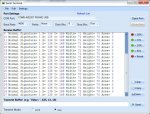planchibus
New Member
Hi there:
I would like to know if anyone has used this camera with Picaxe. Recognizes colors.
I have a little programming experience.I wanted to use it with my students school but not if it is difficult to program or recommend me another system.
https://www.kickstarter.com/projects/254449872/pixy-cmucam5-a-fast-easy-to-use-vision-sensor
Thanks
I would like to know if anyone has used this camera with Picaxe. Recognizes colors.
I have a little programming experience.I wanted to use it with my students school but not if it is difficult to program or recommend me another system.
https://www.kickstarter.com/projects/254449872/pixy-cmucam5-a-fast-easy-to-use-vision-sensor
Thanks


